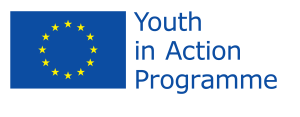Updated on Novembre 20, 2020
Le liberazioni delle tartarughe marine
Mercoledi 21 Maggio siamo andati a Marina Lobra per la liberazione di tre tartarughe. Molti bambini da diverse scuole erano presenti per guardare le liberazioni. Noi tutti siamo saliti su tre diverse barche per liberare le tartarughe lontano della spiaggia. Infatti è pericoloso liberare tartarughe vicino amolte barche. I bambini e gli insegnanti hanno potuto guardare le tre liberazioni dalla loro barca.
Lunedi 26 Maggio abbiamo liberato altre tre tartarughe marine a Marina del Cantone. Le tartarughe che sono state liberate si erano ferite e sono state curate alla Stazione Zoologica di Napoli Anton Dohrn prima della liberazione. Questa giornata era anche l’opportunità per incontrare bambini delle scuole nei dintorni di Massa Lubrense ed altri che facevano un bagno con i loro genitori a Marina del Cantone. Tutti hanno potuto vedere le tartarughe da vicino, e tutti volevano accarezzare e tartarughe. Purtroppo era vietato accarezzarle per non stressarle.
Abbiamo parlato con i bambini e gli abbiamo dato informazioni a proposito di diversi aspetti della vita delle tartarughe: la migrazione, la nidificazione, ed i pericoli della pesca per le tartarughe. Avevamo preparato giochi per i bambini. Un gruppo aveva preparato un gioco che faceva in modo che i bambini prendessero il posto di una tartarugha che voleva deporre le uova, e delle piccole tarturaghe che volevano andare al mare. Quindi i bambini dovevano evitare ostacoli sulla spiaggia per trovare un buon posto per il nido, e dopo dovevano scappare da un gabbiano e da una volpe per raggiungere il mare. Un altro gruppo aveva quattro scatole per fare vedere quattro tipi di rete. I bambini dovevano stimare quale tipo di rete è il più mortale per le tartarughe e quale cattura più tartarughe. Un terzo gruppo ha spiegato con due mappe la migrazione delle tartarughe e ha insegnato i dettagli grazie a un quiz.
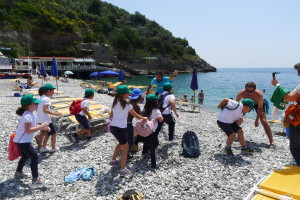
Dopo i giochi le tartarughe sono state portate sulle barche, e tutti le hanno potuto seguire. Per liberare le tartarughe in tutta sicurezza a Marina del Cantone, abbiamo dovuto navigare lontano dalla spiaggia visto il grande numero di barche qua, come in Marina Lobra. Vicino a Punta Penna le tartarughe hanno potuto finalmente tornare nella loro ambiente e nuotare felicissamente.
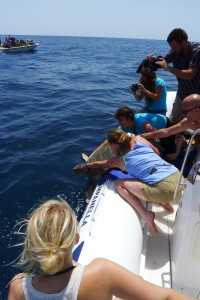
Tutti i bambini erano attenti e rispettosi, ed anche molto contenti di potere vedere delle tartarughe ed imparare informazioni a proposito di questi animali.
Due giorni più tardi siamo andati a una spiaggia vicino Napoli per guardare la liberazione di quattro tartarughe. La situazione era diversa. Non abbiamo avuto il tempo di giocare con i bambini e loro imparare informazioni. Ciononostante, siccome non c’era alcuna barca, le tartarughe sono state liberate sulla spiaggia, e tutti povevano guardare le liberazioni con i piedi nella sabbia. Come le due prime volte, ogni liberazione era seguita da grida di entusiasmo ed applausi dei bambini.
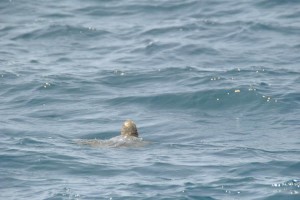
Updated on Novembre 20, 2020
Agriculture – Guided Visit with FAI
In the morning of the 18h of May, 4 of us wanted to learn more about Agriculture in Ieranto Bay. We went together with our FAI Guide Antonella and some families, slowly slowly, to our first Checkpoint, Salvatore’s house.
Salvatore, Ieranto Bay’s guardian, let us have a look in his garden, where you could find many fruits and vegetables, which are growing under the strong sun very well. Thanks to the work of Ieranto bay’s gardener Paolo, we could see strawberries, eggplants, salads, apricots, zucchinis, potatoes, lemon trees, French endives and white beans (faggioli).
Then it was time for a small experiment. Some of the guided visit members started a tree transplantation. They used a branch of an olive tree and transplanted it on an other olive tree’s stem, using a specific dough as a natural bandaid, hoping they will connect!
The branch and the stem on which the former is transplanted don’t have to be of the same species. For example a lemon tree branch can be transplanted on an orange tree.
Specimen planted following this technic
Next we saw the lemon tree plantation of Ieranto bay. The trees are surrounded by many wood panels which protect the trees and the fruits from intense sunlight, rain, salt that is brought from the sea and hail.
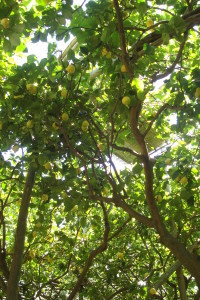
The highlight of the guided visit for us was having the chance to learn something about the production of Mozzarella and olive oil, then, of course, to taste them.
The process of making mozzarella is very interesting. The recipe has remained the same for many years, and the father still gave instructions to his son.
There was a second presentation during the afternoon. Unfortunately Max couldn’t attend it. Having eaten so much ricotta with oranges, mozzarella, meat and cake with honey, and exhausted by the heat, he took a nap in the shade and missed the picture show we had in the FAI Info-point. Don’t worry Max, there will be a next guided visit!
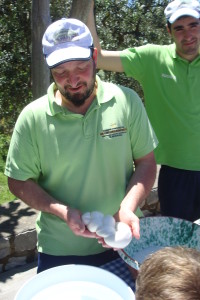
Updated on Novembre 20, 2020
Come abbiamo fatto il nostro orto…
Avere un orto nel giardino di casa è un modo sostenibile e rispettoso dell’ambiente per la produzione di verdure che possiamo usare nella nostra cucina. Dopo possiamo anche riutilizzare i rifiuti organici della cucina per la produzione di compostaggio che sarà il concime per le piante dell’orto.
Nel nostro caso abbiamo fatto un piccolo orto nel giardino della scuola dove abitiamo, e abbiamo piantato dei fiori per la decorazione e verdure per cucinare. Per esempio abbiamo piantato:
– Peperoni, cipolle, zucchini, insalate, melanzane, pomodori.
– Margherite, begonie, girasoli, dalie.
– Menta, salvia, papiro, iris, basilico.
Adesso racconteremo i passi che dobbiamo realizzare per iniziare a lavorare la terra dell’orto e studieremo anche alcune tecniche sulla protezione e irrigazione del terreno.
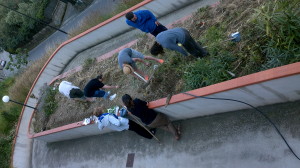
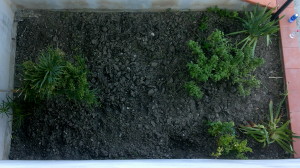
I passaggi
- Il primo passo per iniziare a lavorare la terra è estirpare tutta la vegetazione cresciuta durante il periodo durante il quale non abbiamo usato l’orto (per questo lavoro usiamo i guanti).
- Poi dobbiamo lavorare la terra fino a lasciarla morbida per la corretta distribuzione dell’acqua quando irrighiamo, e per la corretta crescita delle radici.
Le pietre più grandi che abbiamo trovato nella terra, le abbiamo tolte per tracciare le linee che separano i diversi tipi di verdure e ortaggi che coltiviamo.
- Nel nostro caso, prima di piantare le verdure le abbiamo comprate già un po’ cresciute, poi abbiamo fatto dei buchi per metterle dentro. Nel caso dei fiori, abbiamo seminato direttamente il seme.
- Poi arriva il momento dell’acqua, ed adesso raccontiamo come si deve irrigare: è meglio irrigare le piante nel pomeriggio o la sera, quando non c’è più il sole direttamente sulle piante.
– La prima ragione di questo fatto è per evitare l’evaporazione dell’acqua che abbiamo utilizzato.
– Una seconda ragione è che se il sole arriva troppo forte sull’acqua che si trova sulle foglie ciò può agire come effetto-lente e potrebbe bruciarle.
– Un’ultima ragione è per evitare lo stress delle piante, perche sarebbe molto difficile e costoso fare la fotosintesi e prendere l’acqua dalla terra, tutto nello stesso momento.
Alla fine abbiamo usato la vegetazione che abbiamo tolto all’inizio per coprire la superficie della terra e così evitiamo la radiazione diretta del sole e possiamo mantenere l’umidità del suolo. Questa tecnica se chiama “Pacciamatura”.
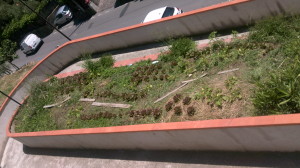
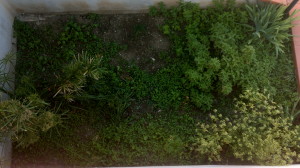
Updated on Agosto 12, 2014
Tribute to the Sea, a moment with Franco (said Diogenes)
« Lo iodo per combattere l’odio », traduced « The iodine to fight against the hate », beautiful anagram found by Franco, artist and philosopher in love with the Sea. Franco was born and has grown up in Nerano, and since he was a child, he always loved, as many of us, swiming and beeing close to the « big blue ». After studying art (and life) in London, he finally went back to his village, to his roots, and opened a bar in the little square that didn’t scarcely change from his childhood. Then, he transformed his bar in a real exhibition devoted to the sea and you can have, there, a coffe in the middle of philosophical thoughts, paintings and sculptures made of diverse objects found in the water. The Sea is his muse, and his favourite moment to write is the winter. When there is nobody, and that he can quietly listen to it and observe its many touches of colour, he submerge himself in a whole harmony with the Nature. Enjoying a limon slush while listening nice napoletan music, he precised us the sens of his work.
A main element leads his story: the Sea. The Sea as start and ending of everything. This is also the first idea in his work. Remembering the natural cycles of many species that always return at the place they where born, he explains us that all of us, in a certain way, feel attracted to the Sea because, as he says, « almost 72% of our body is made of liquids (just like The Earth) so it feels nostalgy of its origin. This is the reason why it is important to be always in contact with the Sea, and not only when the weather is good ». Moreover, Franco, throughout his exhibition, pays tribute to the Sea that cures as well bodies than brains, and that makes us feel that good, free, lighter… « La salute nostra dipende del « dottor mare » … Il nuoto riempie il vuoto ». (« Our health depends of the « doctor Sea » … because « Swimming fills in the emptyness »). From a certain point of view, Franco, collecting this way objects to give them a new life, so removing them from the water, cures the Sea as the Sea does cure him … a certain symbiosis between them, somehow.
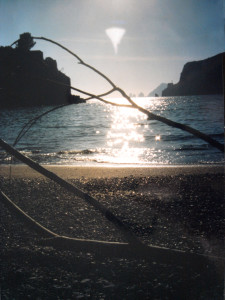
At this point, Franco mentions a bit sadly a kind of melancholy of the passed time. Nowadays people forgot its aquatic origin, and we can observe a lack of respect towards the Sea and the environment generally speaking. As proof the increible quantity of rubbish we can see floating so often (« in the Pacific Ocean, a so said « 6th plastic continent » doesn’t stop increasing ») or washing ashore every day … Franco’s work not only consists in the description of his love for that Sea who saw him growing up, but also in the denunciation of its actual situation. He tells us how he saw it deteriorating year after year: « Before, in the area, there where the monk Seal. Fishermen say that they where coming to the coast and eating grapes before going back to the Sea ». He also evoques the shell « orecchio di Dioniso » and the seahorse that he used to see, and that we can’t find anymore. The action of the human being made of the sea he used to know another Sea: « Now, with the fertilisers that go to the Sea, it’s not the same anymore, after the bath, I need a shower. »
From his message we’ll keep this: Let’s return to our previous values, our future depends on it. « The Earth doesn’t need us, but, on the contrary, we do. We arrived to the point in which not dirtying is not enough, but in which we need to cure it ».
Il NUOTO RIEMPE IL VUOTO
« Senza la guerra
Paradiso è la Terra
Del Mare lo iodio
Per sconfigere l’odio.
Il nuoto riempie il vuoto.
Nuotare come volare
Ma il naufragar
Non m’ è dolce
In questo mar…
Di naufraghi extra comunitari »
Updated on Agosto 22, 2015
Omaggio al Mare, un momento da Franco (detto Diogenes)
« Lo iodo per combattere l’odio », bell’ anagramma trovato da Fanco, arstista filosofo inamorato del mare. Franco è nato e cresciuto a Nerano, e da piccolo, sempre gli è piaciuto, come a molti di noi, fare il bagno ed essere vicino alla grande distesa blu. Dopo aver studiato l’arte (e la vita) in Londra, è finalmente tornato nel suo paese, alle sue radici, ed ha aperto un bar sulla piazeta di Nerano che non è quasi cambiata dalla sua infanzia. In seguito, ha trasformato il suo bar in una vera mostra dedicata al mare, e qui, potete bere il caffè in mezzo a pensieri filosofici, pitture e sculture elaborate con diversi oggetti incontrati nell’aqua. Il mare è la sua musa, ed il suo momento preferito per scrivere è l’inverno. Quando non c’è nessuno e che puo tranquillamente ascoltarlo, osservare le sue numerose sfumature di colori, si immerge in totale comunione con la natura. Assaporando una granita al limone al suono di misica napoletana, ci ha precisato il senso della sua opera:
Un elemento principale guida la sua propria storia: Il mare. Il mare come origine e fine di tutto. Quello è pure l’idea prima nella sua opera. Ricordando i cicli naturali di molte specie che tornano sempre allo stesso posto della loro nascita, ci spiega che tutti, in un certo modo, ci sentiamo attrati dal mare perché, come dice, « circa il 72% del nostro corpo è costituito di liquidi (giusto come la Terra) quindi sente nostalgia della sua origine. Percio è importante essere sempre in contatto con la natura, non solo quando fa bel tempo ». Inoltre, Franco, attraverso la sua opera, rende omaggio al mare che cura il corpo come lo spirito, e ci fa sentire cosi bene, liberati, piu leggeri…« La salute nostra dipende del « dottor mare » … Il nuoto riempie il vuoto ». Da un certo punto di vista, Franco, raccogliendo oggetti per darl loro una nuova vitta, quindi togliendoli dall’acqua, cura il mare come il mare cura lui… una certa simbiosi tra di loro, insomma.

A questo punto, Franco evoca un po tristemente una certa malinconia del tempo passato. Oggi la gente ha dimenticato la sua origine acquatica, e si osserva una mancanza di rispetto verso il mare e l’ambiente. Ce lo dice la quantita incredibile di rifiuti che possiamo veder galleggiare cosi spesso, o che si arenano ogni giorno… come ad esempio nel Pacifico si è formato il cosi detto « sesto continente di plastica», che cresce ancora. L’opera di Franco non consiste unicamente nella descrizione del suo amore per il mare che l’ha visto crescere, ma anche nella denuncia della sua situazione attuale. Ci raconta come l’ha visto degradarsi anno dopo anno: « Prima, nella zona, c’era la foca monaco. I pescatori raccontano che arrivavano a terra, mangiavano chicchi d’uva e poi, tornavano in mare. Evoca anche l’ « orecchio di Dioniso » e l’ippocampo, che vedeva da piccolo, e che non si vedono piu. L’azione del uomo a fatto del mare che ha conoscuito un altro mare: « Ora con i fertilizzanti che vanno al mare, non è piu lo stesso, dopo il bagno, ho bisogno di una doccia »
Dal suo messagio, ci rimane questo : Recuperiamo i valori di prima, da quello dipende il nostro futuro. « La terra non ha bisogno di noi, noi invece si. Siamo arrivati al putno in qui non basta piu non sporcarla, ma bisogna curarla ».
Il NUOTO RIEMPE IL VUOTO
« Senza la guerra
Paradiso è la Terra
Del Mare lo iodio
Per sconfigere l’odio.
Il nuoto riempie il vuoto.
Nuotare come volare
Ma il naufragar
Non m’ è dolce
In questo mar…
Di naufraghi extra comunitari »


